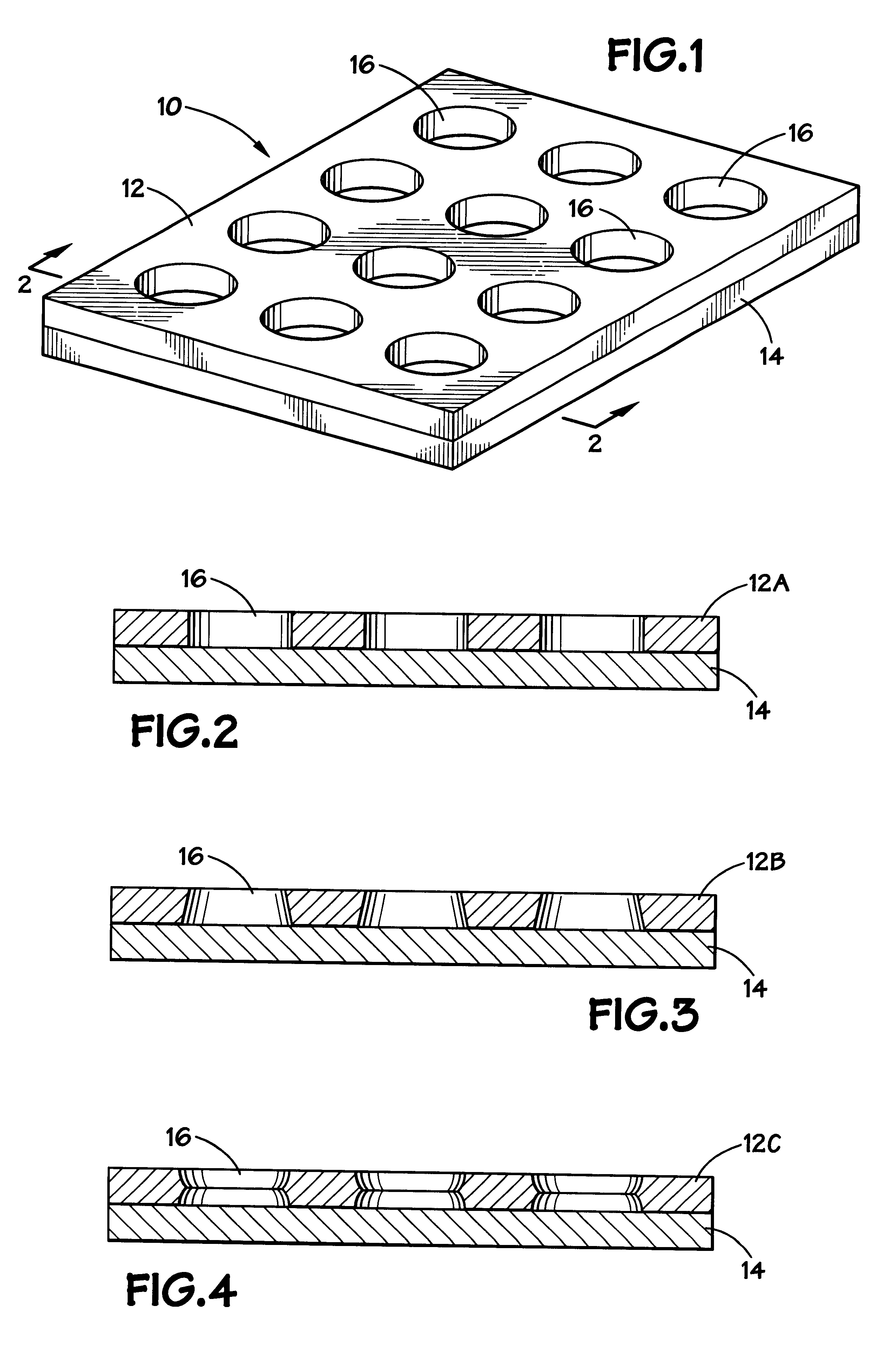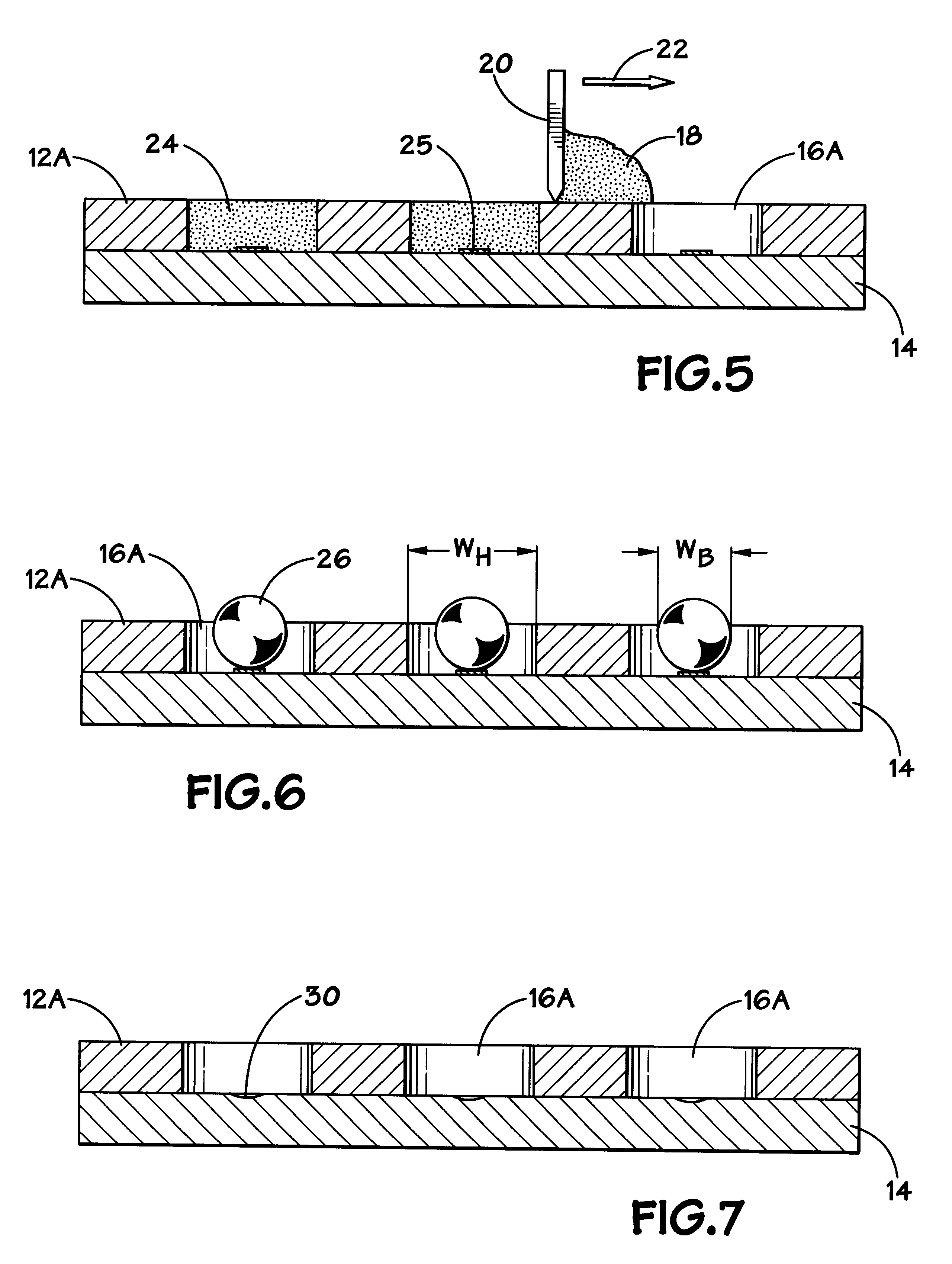Methods and apparatus for forming solder balls
a technology of soldering balls and methods, applied in the field of electric circuitry, can solve the problems of failure to form the desired electrical connection, uneven size of solder balls, and slight alteration of the volume and position of each solder ball
- Summary
- Abstract
- Description
- Claims
- Application Information
AI Technical Summary
Problems solved by technology
Method used
Image
Examples
Embodiment Construction
Turning now to the drawings, and referring initially to FIG. 1, an apparatus for forming solder balls is illustrated and generally designated by the reference numeral 10. The apparatus includes a stencil 12 and a substrate 14. The stencil 12 includes a plurality of holes 16 formed therethrough. Unlike the conventional techniques for forming solder balls discussed above, the stencil 12 is disposed on the substrate 14 and it is not removed from the substrate 14 prior to solder ball formation. Rather, as discussed in detail below, solder paste is disposed in the holes 16 of the stencil 12, and the apparatus 10 is heated to melt and reflow the solder paste into solder balls.
Because the stencil 12 remains on the substrate 14 during the formation of the solder balls, it does not remove paste from the substrate 14 that would otherwise be used to form solder balls. Because of this, any suitable stencil having uniform holes may be used. For example, the stencil 12 may be a laser cut stencil ...
PUM
| Property | Measurement | Unit |
|---|---|---|
| non-wettable | aaaaa | aaaaa |
| wettable | aaaaa | aaaaa |
| size | aaaaa | aaaaa |
Abstract
Description
Claims
Application Information
 Login to View More
Login to View More - R&D
- Intellectual Property
- Life Sciences
- Materials
- Tech Scout
- Unparalleled Data Quality
- Higher Quality Content
- 60% Fewer Hallucinations
Browse by: Latest US Patents, China's latest patents, Technical Efficacy Thesaurus, Application Domain, Technology Topic, Popular Technical Reports.
© 2025 PatSnap. All rights reserved.Legal|Privacy policy|Modern Slavery Act Transparency Statement|Sitemap|About US| Contact US: help@patsnap.com



